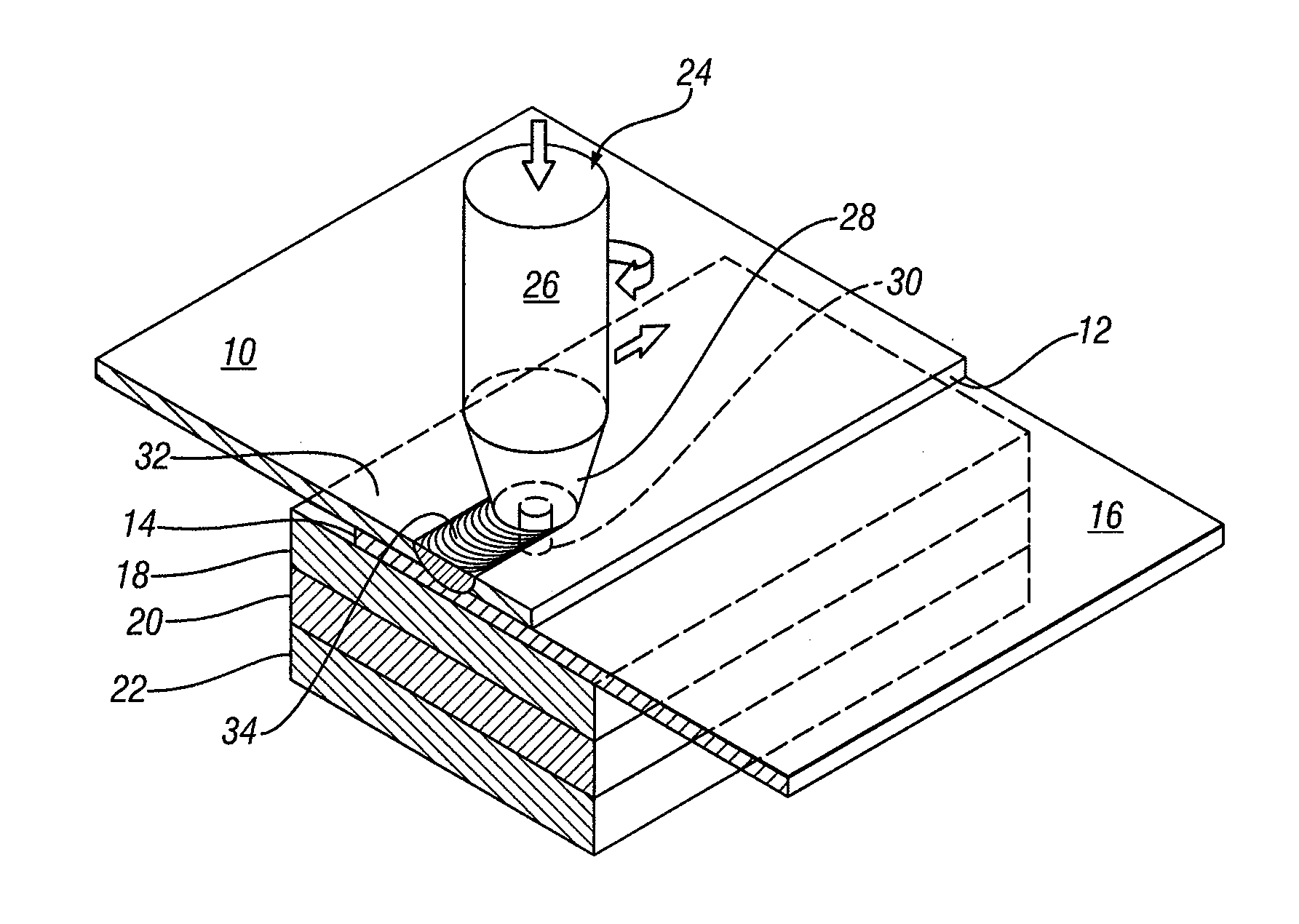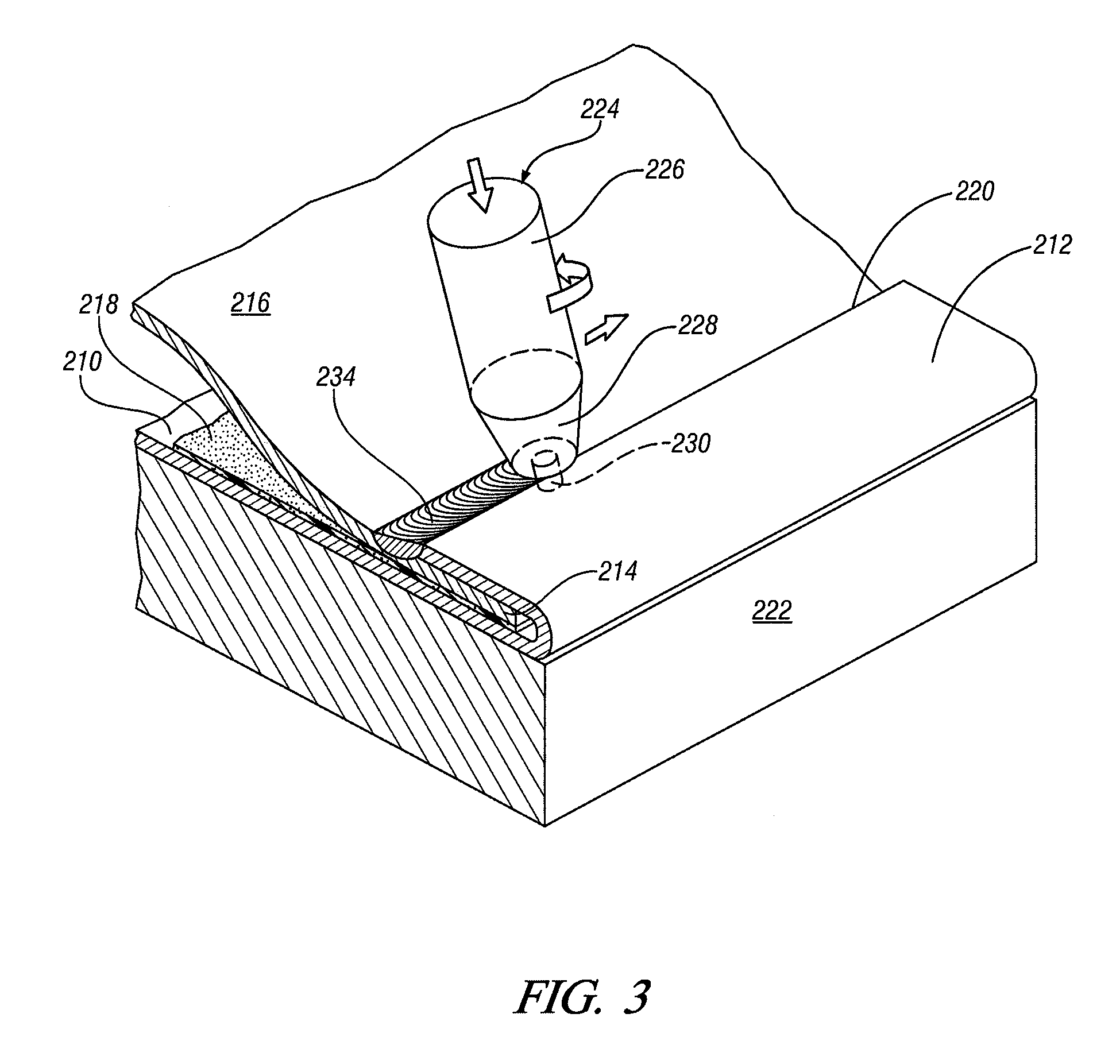Reducing sheet distortion in friction stir processing
a technology of friction stir and friction stir, which is applied in the direction of manufacturing tools, non-electric welding apparatuses, transportation and packaging, etc., can solve the problems of thermal and mechanical distortion of friction stir welded aluminum sheets, distortion of the cooler surrounding metal, and marred visible surfaces of automotive body panels, so as to reduce the yield strength, facilitate unwanted deformation, and high conductivity
- Summary
- Abstract
- Description
- Claims
- Application Information
AI Technical Summary
Benefits of technology
Problems solved by technology
Method used
Image
Examples
Embodiment Construction
[0015]Sheet distortion during friction stir welding and other friction stir processing has limited the application of these processes for thin sheets, for example, sheets having a thickness in a range of about one-half millimeter to about four millimeters. Often, each sheet layer will be about one millimeter thick. Sheet distortion can occur locally due to plastic deformation under the friction stir tool and in the whole blank caused by non-uniform thermal expansion (due to non-uniform temperature distribution) of the constrained workpiece. High thermal conductivity hard copper anvils and backing plates reduce the peak temperature in the contacting regions of workpiece and anvil. This reduces the plastic distortion of the bottom surface of the work piece (especially thin sheet alloys of the order of one millimeter thickness per layer) and improves the aesthetics of the bottom surface of the welded assembly. Better heat removal not only retains a better strength of the workpiece duri...
PUM
| Property | Measurement | Unit |
|---|---|---|
| Temperature | aaaaa | aaaaa |
| Surface roughness | aaaaa | aaaaa |
| Mechanical properties | aaaaa | aaaaa |
Abstract
Description
Claims
Application Information
 Login to View More
Login to View More - R&D
- Intellectual Property
- Life Sciences
- Materials
- Tech Scout
- Unparalleled Data Quality
- Higher Quality Content
- 60% Fewer Hallucinations
Browse by: Latest US Patents, China's latest patents, Technical Efficacy Thesaurus, Application Domain, Technology Topic, Popular Technical Reports.
© 2025 PatSnap. All rights reserved.Legal|Privacy policy|Modern Slavery Act Transparency Statement|Sitemap|About US| Contact US: help@patsnap.com



